Shaggy mane mushrooms seem to pop up just in time for Halloween where I live. Their ghostly look and the way they creepily melt into an ink-like yet edible substance perfectly fit the fall vibe! Here’s all you need to know about identifying and using them.
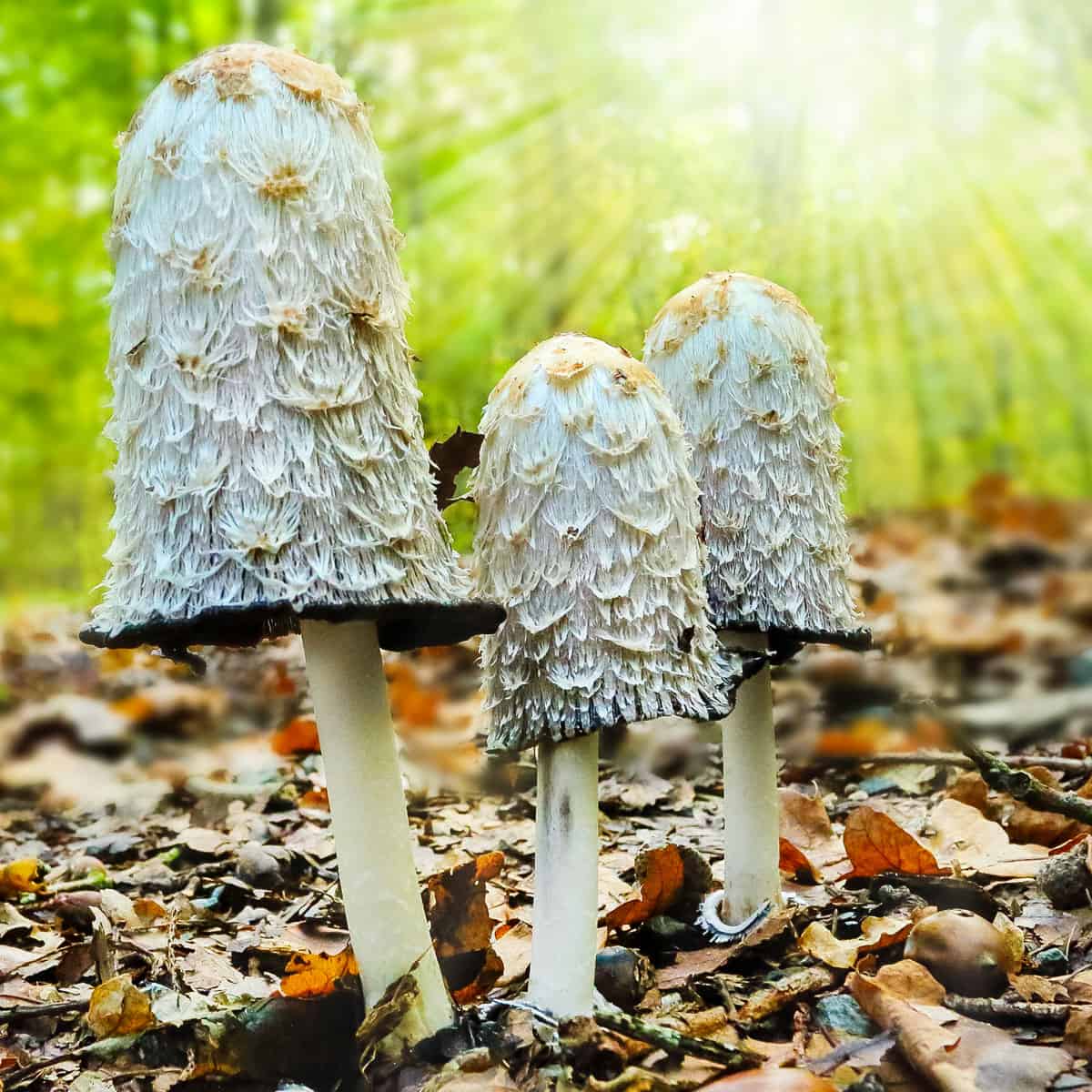
Want to save this post for later?
About Shaggy Mane Mushrooms
Shaggy mane mushrooms (Coprinus comatus) are easily identified and deliciously edible when cooked. Not to be confused with lion’s mane mushrooms based on their name, shaggy’s look quite different.
In Vermont, where I live, they always pop up around Halloween, which fits their look perfectly. I always think they look like little ghosts and feel a little spooky when they dissolve into ink.
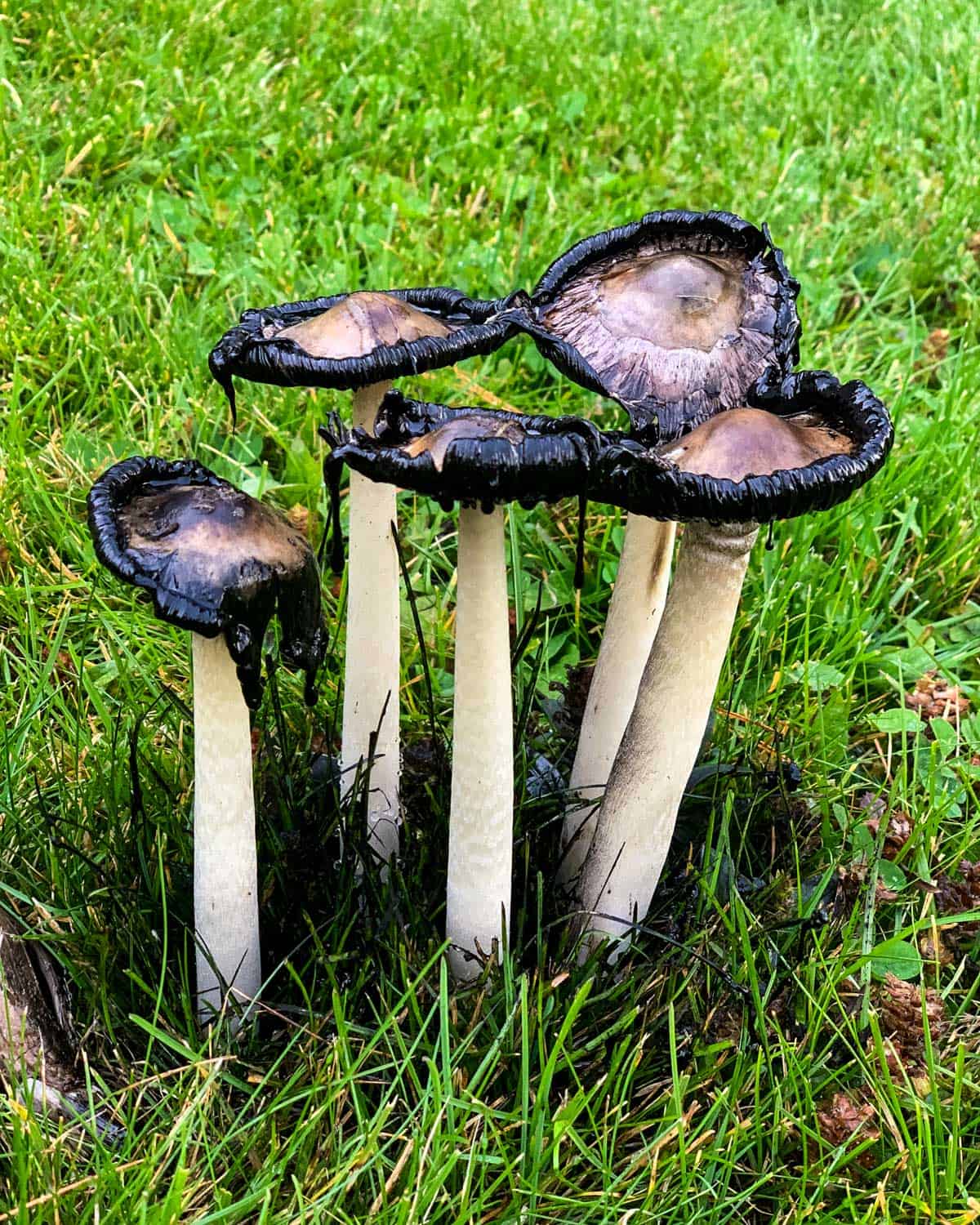
However, this is different for some regions. They grow in some places in early spring, summertime, and through late fall.
These cuties are also called “shaggy ink cap” and “lawyer’s wig,” which, to be fair, they do resemble! All parts of shaggy mane mushrooms are usable; the trick is that you have to be quick, or they’ll disintegrate into ink. Yikes!
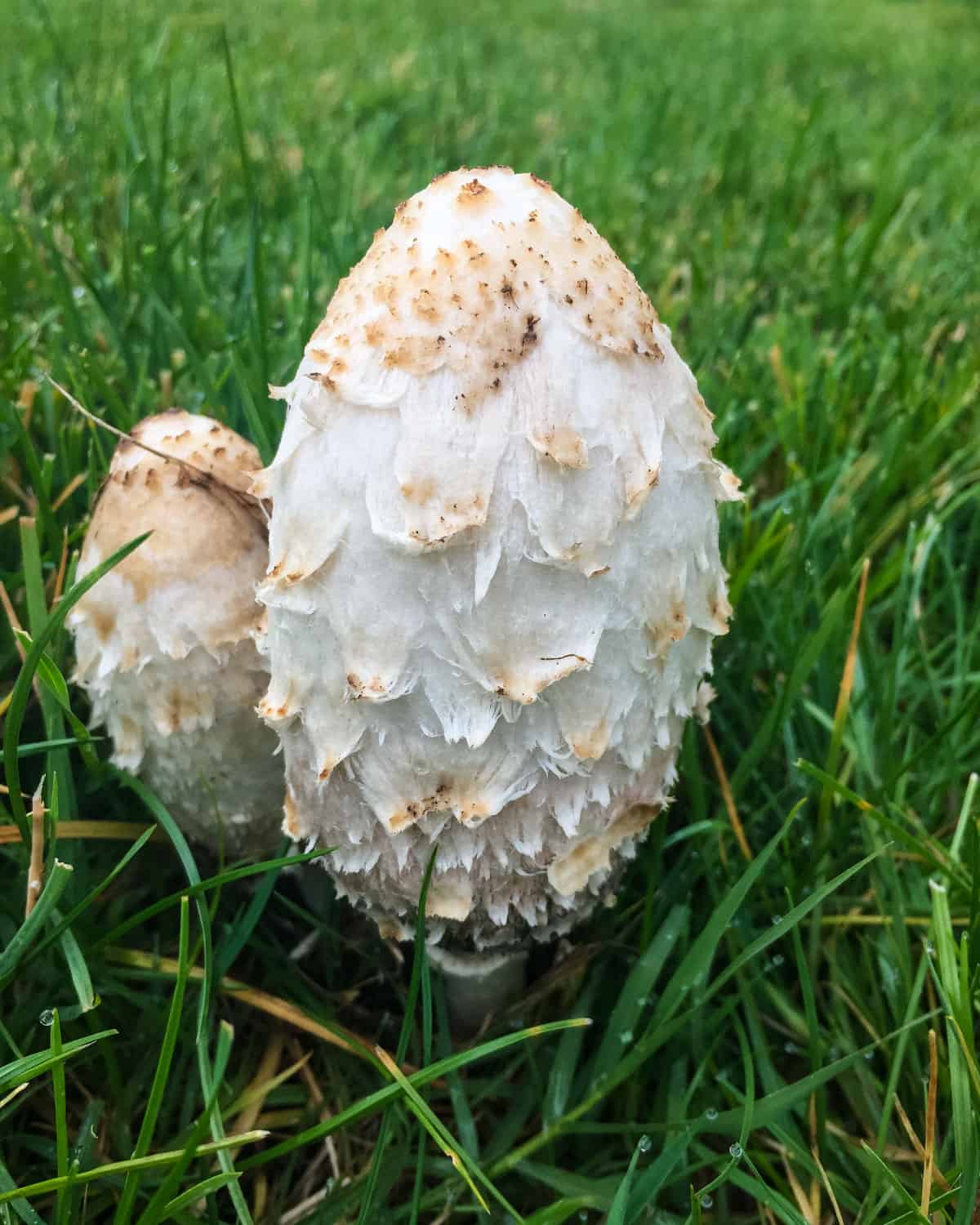
Where to Find Shaggy Mane
Shaggy mane mushrooms grow all over the northern hemisphere, Australia, and New Zealand.
These mushrooms tend to grow in dense clusters, so don’t expect a lone shaggy mane. They grow primarily in disturbed soil that has been altered from its original state.
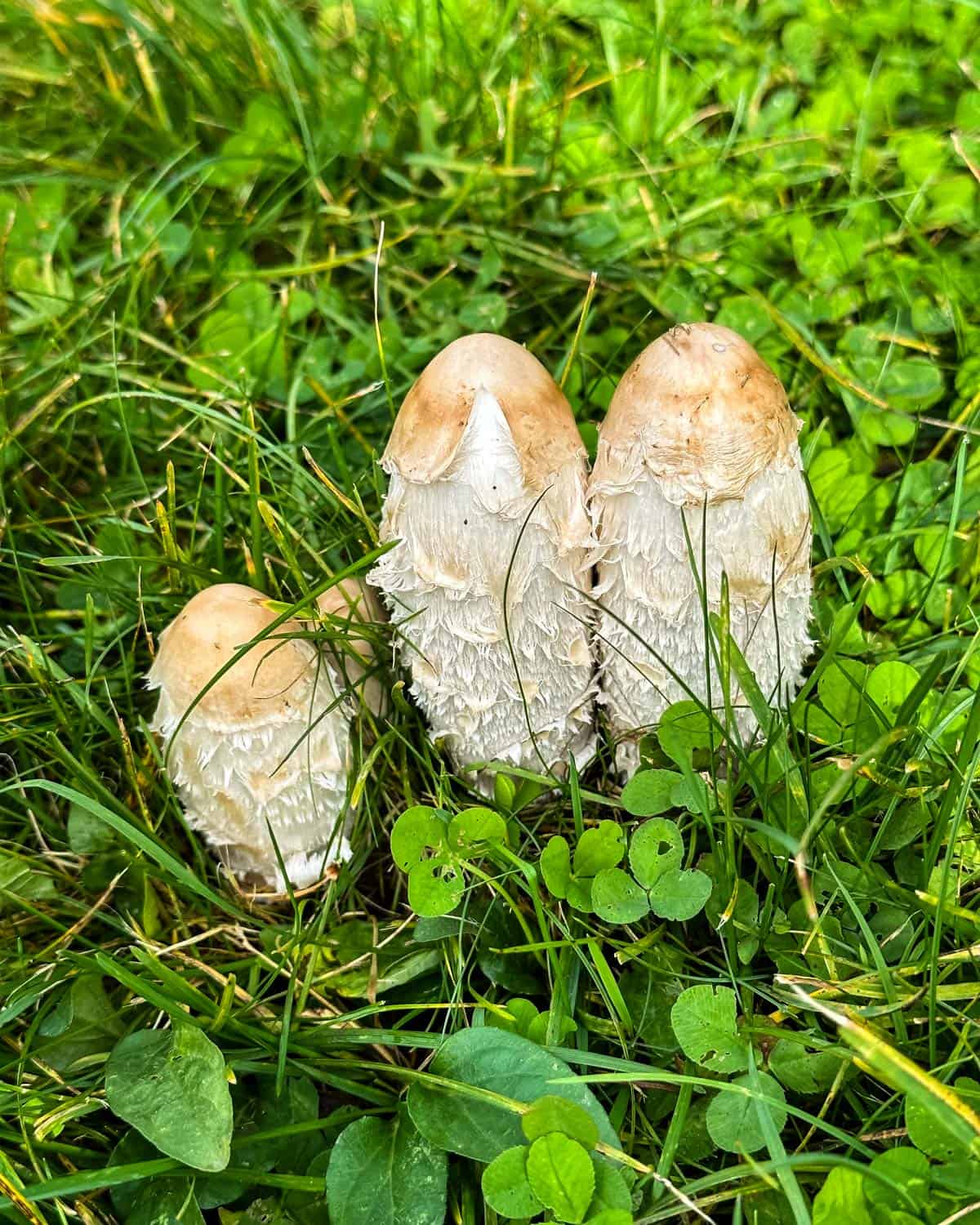
Look for clusters of shaggy manes in open meadows, lawns, and grassy banks along the side of the road. You might even see them growing in your garden or compost heap in your backyard!
Gather some up with other edible backyard weeds for a tasty meal. These mushrooms are unique-looking and easy to find when you know where and what to look for.
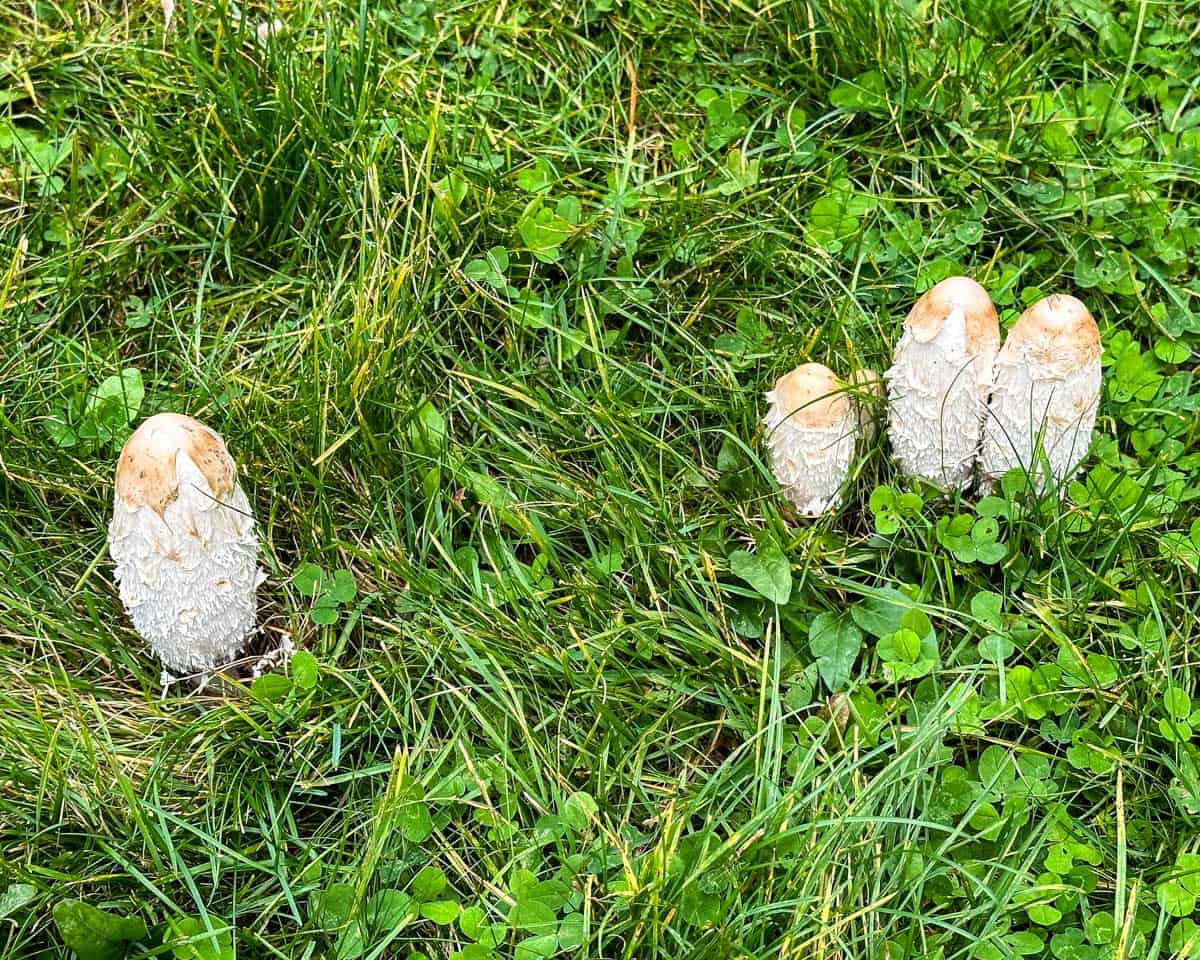
Shaggy Mane Identification
Shaggy mane mushrooms have an easily identifiable look that compliments their name. They have a cylindrical cap that ages into a bell shape and feather-like shaggy scales.
The caps are white and have a cream color center, and the flesh is also white. When exposed, the inner flesh of the mushroom has a slightly sweet aroma.
Look for crowded gills; they’re initially white with a pink tinge but turn into a black, inky fluid as they age. It has a partial veil that leaves a moveable narrow ring and leaves a black spore print.
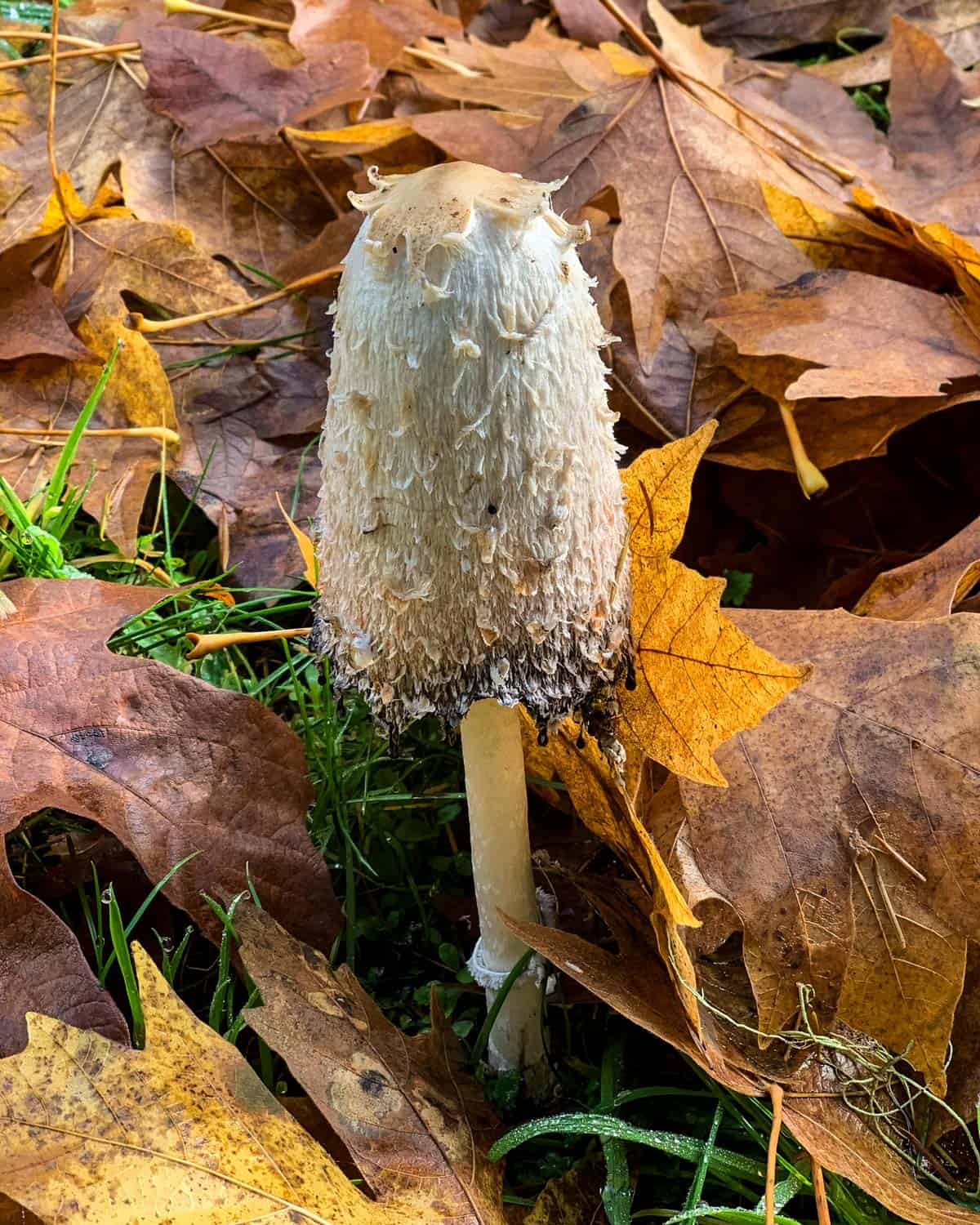
Harvesting Shaggy Mane Mushrooms
Only harvest shaggy manes for eating when they are young and before their gills get the inky goo. They are still edible after turning black and gooey, but the texture isn’t great or very appetizing.
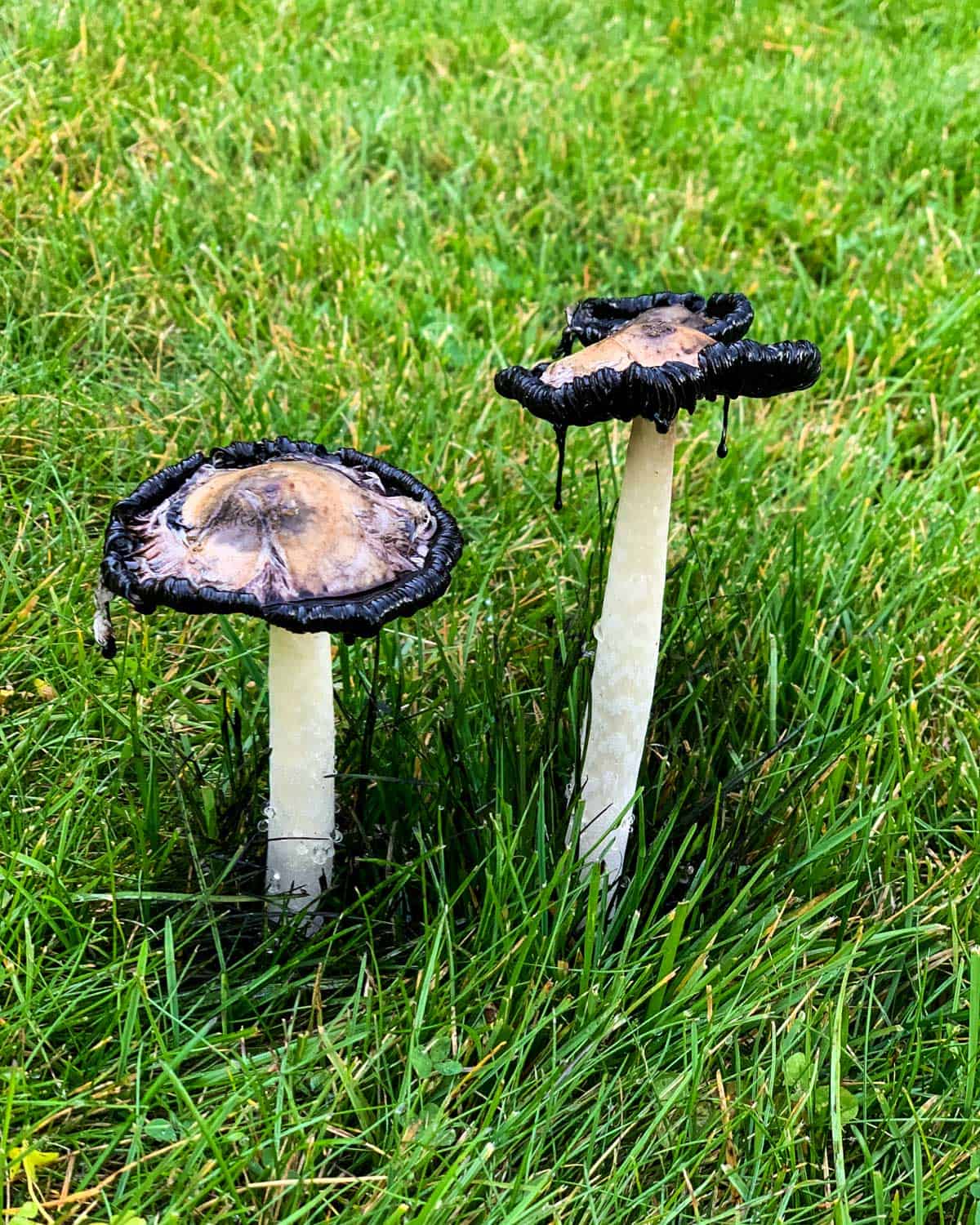
They are very delicate mushrooms, so take care when transporting them so they don’t bruise and fall apart. Their shelf life is very short so I recommend using them right away.
Shaggy Mane Look-Alikes
Magpie fungus (Coprinopsis picacea), also called inky cap, is a toxic species that can be confused with a shaggy mane in its early stages. It has veil-like patches covering the cap, which shaggy mane doesn’t have.
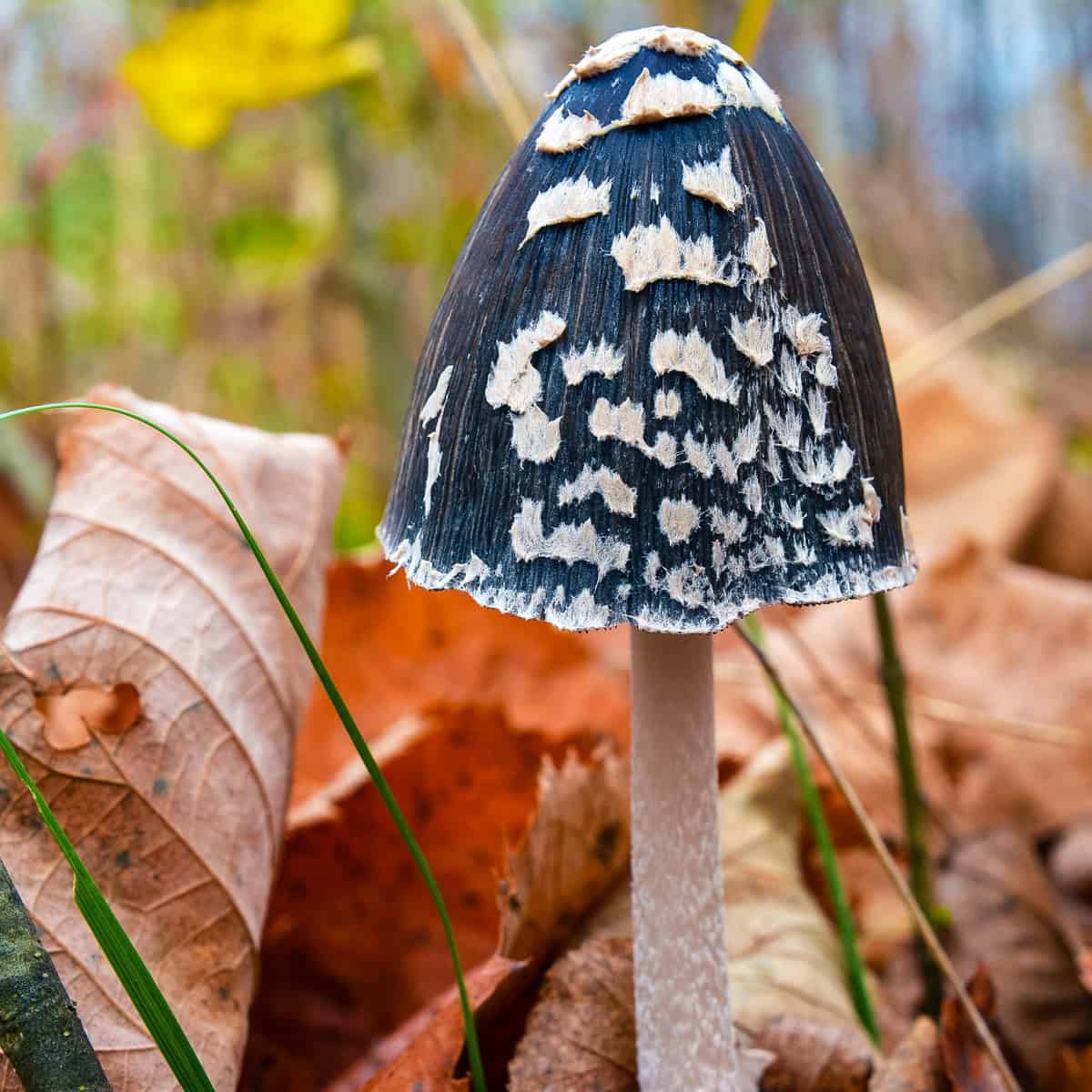
Magpie fungus is light to dark brown to black with gray-brown flesh, and it tastes unpleasant and can cause digestive upset.
Tippler’s bane (Coprinopsis atramentaria) is edible with caution. It contains coprine, which reacts negatively with alcohol.
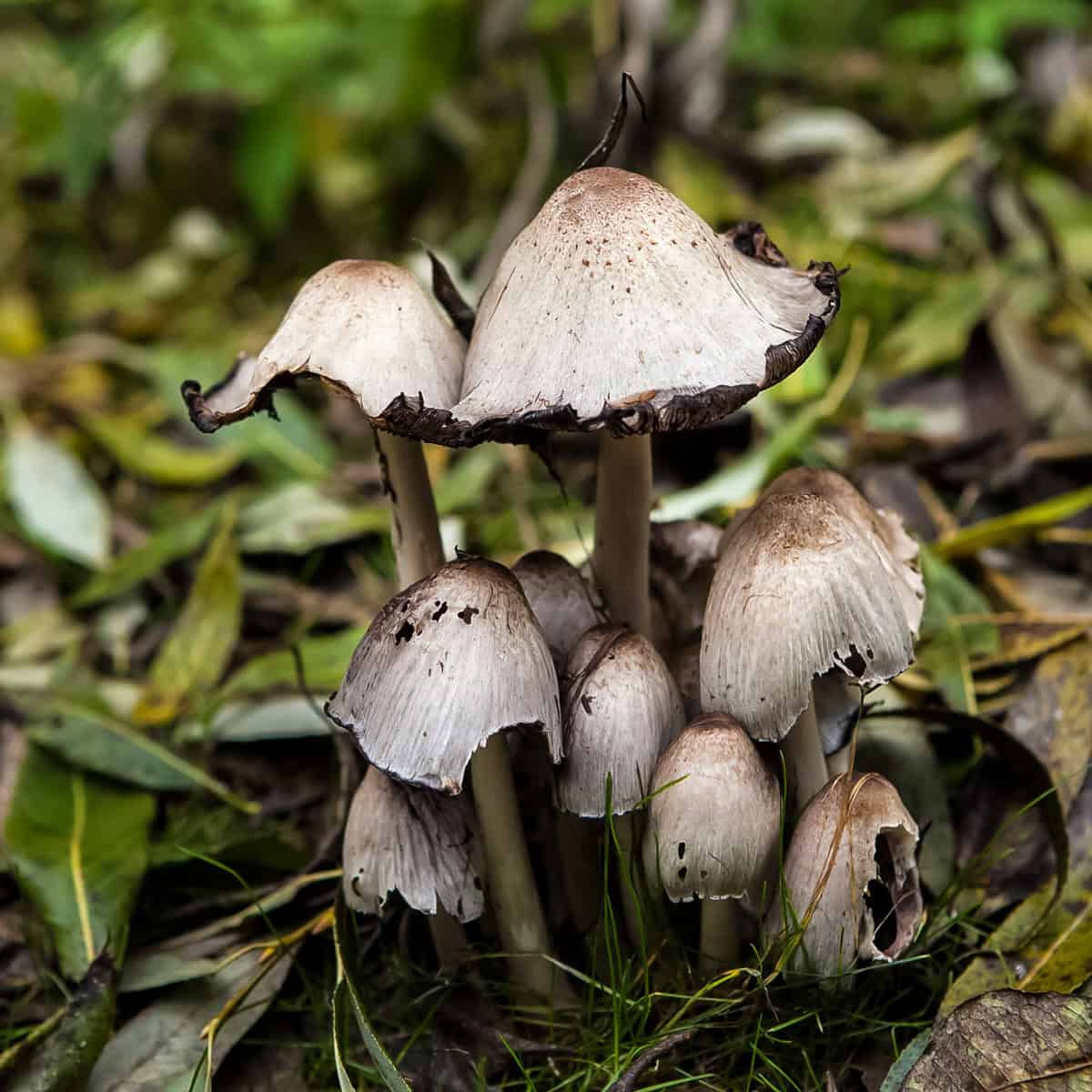
Do not mix Tippler’s bane with alcohol, or a toxic reaction will occur. Even if you have a drink up to three days after eating this mushroom, you can get really sick.
It can make your mouth taste metallic and cause headaches, vertigo, and vomiting. So be aware if you’re not sure of the identification.
These are smaller than shaggy manes with a gray-brown cap and grow in dense clusters.
Shaggy mane mushrooms do not contain coprine, so they are safe to drink alcohol with!
Edible Uses of Shaggy Mane
Shaggy manes are a choice edible mushroom when cooked young. They have a light and mild flavor that goes with many dishes. Always cook them before eating.
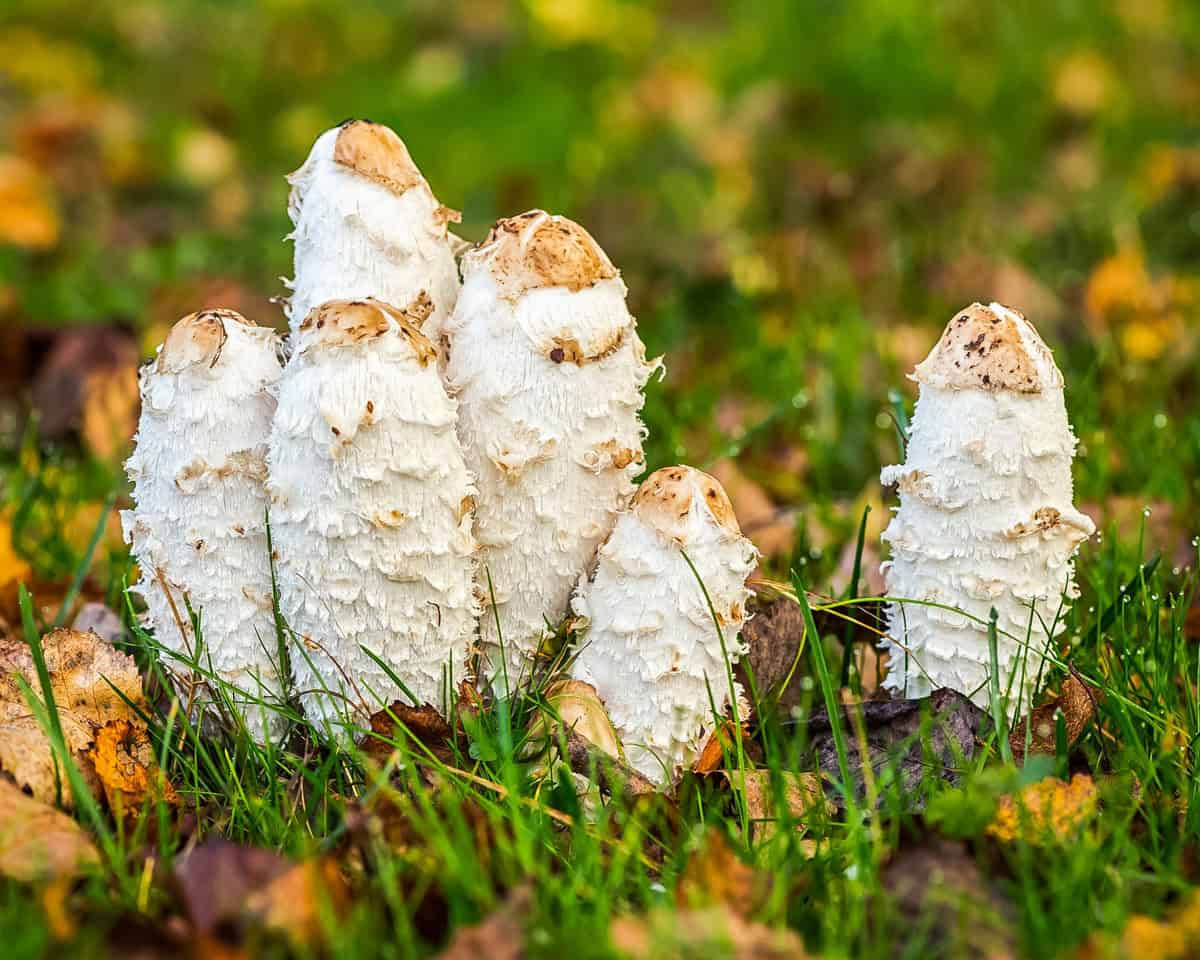
Have a plan in advance because they only have a little time after harvesting before dissolving into mush. A super tasty way to make them is this parmesan crusted shaggy mane recipe or this quick and easy shaggy mane soup.
These tasty mushrooms are a good source of protein, fiber, and antioxidants, so I highly recommend adding them to your foraged food diet!
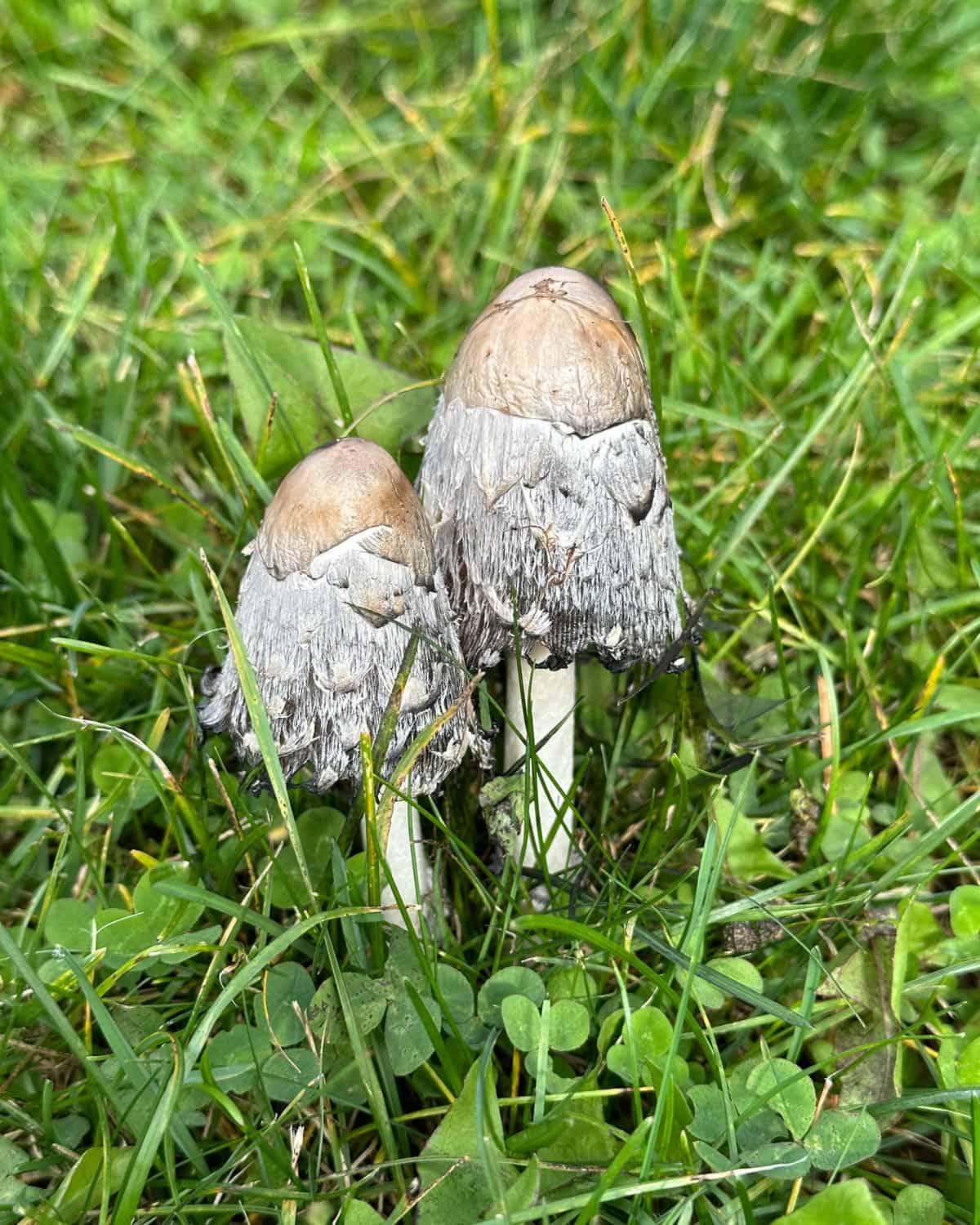
Shaggy mane mushrooms need to be eaten fresh, preferably within a few hours of collecting. Otherwise they will begin to turn black and start to dissolve quickly into an ink-like substance.
Once inky, they are still edible, and the ink is usable! However, it is less appetizing. If you get sidetracked and end up with inky dissolving mushrooms, you can make an ink compound butter or use it to make shaggy mane ink and dye!
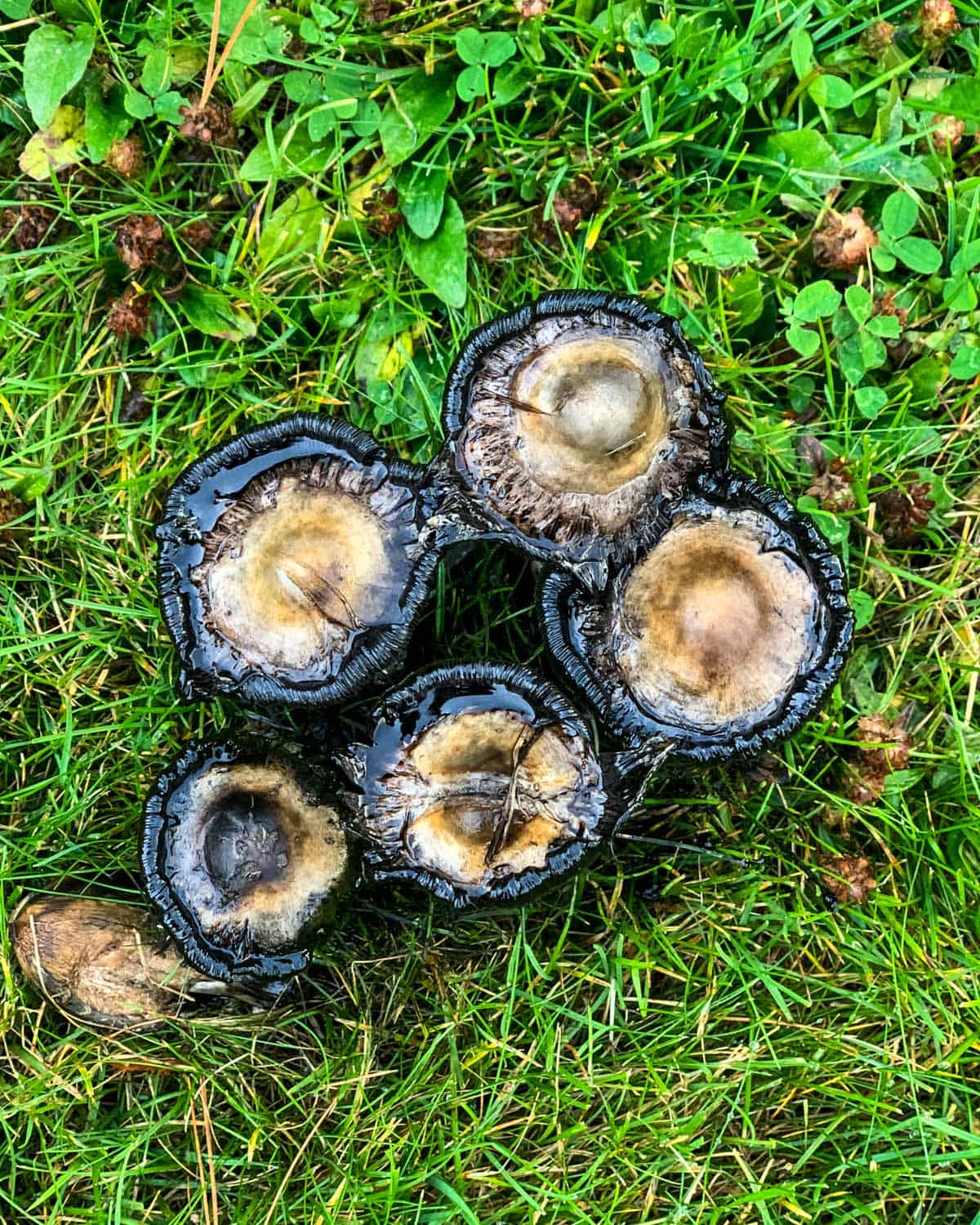
Shaggy mane’s do not dry well unless picked very young and dried quickly, so no matter what you do with these interesting mushrooms, it’s best to have a plan!
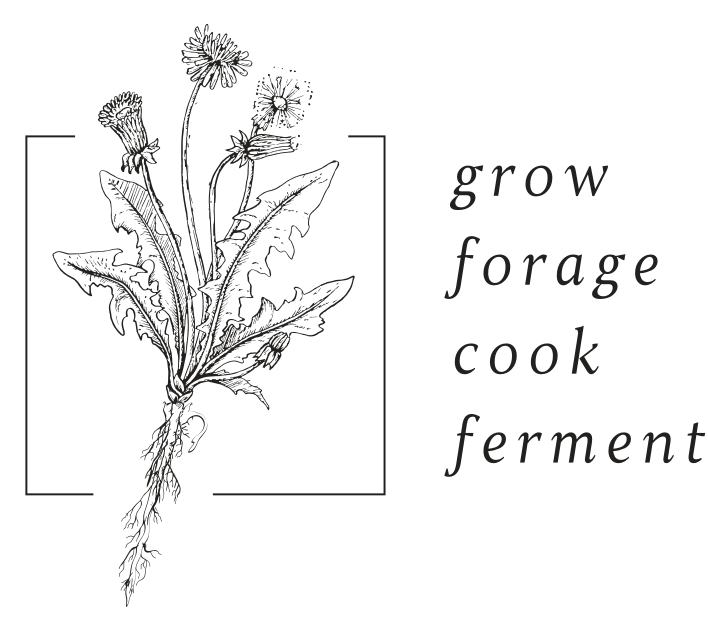
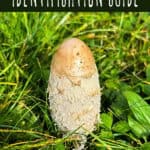
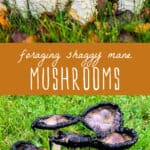

Leave a Reply